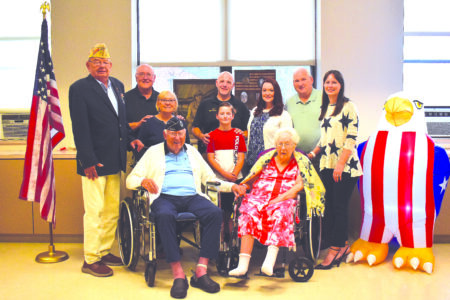Mt. Pleasant a haven for freed slaves

The Ohio Annual Meeting House was built around 1814 in Mt. Pleasant and is considered to be the mother of all Quaker Meetings west of the Ohio River. The Quakers, or members of the Religious Society of Friends, were abolitionists who helped freed slaves find work and homes in the 19th century.
MT. PLEASANT — Abolitionism is one important part of the heritage of several Ohio Valley communities, and one of the many chapters of opposition to slavery occurred in the mid 1800s in Mt. Pleasant.
People of that community welcomed freed slaves who were seeking to build new lives after emancipation.
Angela Feenerty, president of the Mt. Pleasant Historical Society, shared some of the images and records her organization has preserved as Americans celebrate Black History Month this February.
“In 1855 Nancy Talliafero freed her slaves in her will. They were to be provided with $150 each and to be relocated to a free state. Initially they intended to take them to Kansas but thought better of it and decided to take them to Mt. Pleasant to settle them among the Quakers,” Feenerty said. “Mt. Pleasant was well known in the country for its anti-slavery sentiment and its participation in the Underground Railroad.
“Additionally, there were a number of communities of free African-Americans living in the area, including Mt. Pleasant, Emerson, McIntyre and Barnesville. Mt. Pleasant has a long history of helping former slaves, whether they were fugitives or emancipated,” Feenerty added.
She pointed out publications from the Civil War and post-war periods, such as a Wheeling newspaper report that states: “About thirty colored persons of both sexes, who were lately emancipated by the executor of the late Miss Talliafero, of King William County, Virginia, passed through that city on Monday morning on their way to Mt. Pleasant, Ohio, nine miles west of Wheeling where they are to be located among a Society of Friends.”
More information also can be found in the Anti-Slavery Bugle of Lisbon, Ohio, from Saturday, Nov. 3, 1855.
“The number of slaves freed varies from publication to publication, but one thing is certain, the news was widespread and appeared in newspapers across Virginia, Ohio and Pennsylvania,” Feenerty said. “The difference in numbers may be because some of the slaves Nancy Talliafero freed were held back by a lawsuit. Perhaps they came later.”
Feenerty noted the complications in putting together a complete picture of the time. She referred to an issue of the Steubenville Herald Star dated March 15, 1935, which says there were 40 individual slaves involved in the relocation effort and gives the names of Charlotte Pollard Hargrave, Onea Baxter Walker, Harriet Lawson Wooten, Thomas Robinson and Ottawa Moore.
“In 1860 they are found living in large groups together and some living individually in households throughout Mt Pleasant,” Feenerty said. “I have identified an additional 20 who I feel were likely to have come from Ann Nancy W. Talliafero’s estate. Most of them are children. Charlotte Pollard was living in the home of Johnson Underwood, a well-known African-American minister in Mt. Pleasant.”
She added that Ottawa Moore was living in a household with Lewis Norman, while in another household were Joseph Harper and Thomas Robison.
“Oney Baxter was living with Lucinda, Benjamin F, Cynthia, and Robert Baxter. Lucinda was 38 years old and was a washerwoman (who took in laundry from others). Also, in this household were Harriet and Mary Lawson, and Fanny and Spot Green,” she noted.
She added that Spotwood moved to Bellaire and was a barber there. He named a son Ottawa Moore Green.
“All the Quakers in the area helped. There were congregations in Emerson, Mt Pleasant, Barnesville, Flushing, Harrisville, Smithfield. I’ve ID’d 168 people in our immediate area who participated in one way or another in the Underground Railroad. Most of the African-Americans who lived in Mt. Pleasant moved on to larger towns where they could find work — Steubenville, Cleveland, Detroit. I’m not aware of any descendants of these particular families in the area; however, if there are I’d love to talk to them.”
Another point of interest, according to Feenerty: In 1860 Mt. Pleasant’s population was 15 percent African-American, compared to the state of Ohio’s population, which was just 1.5 percent African-American.




